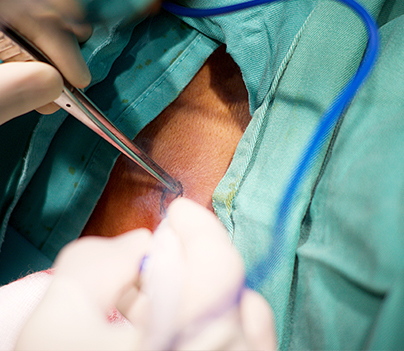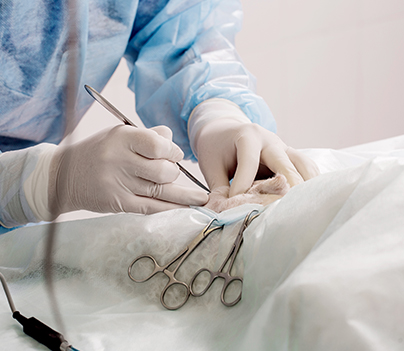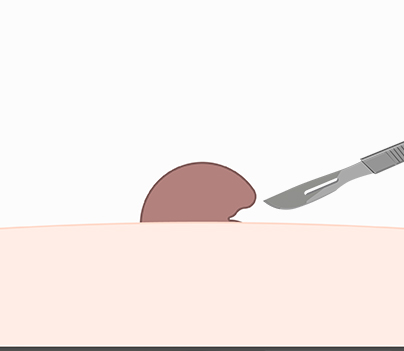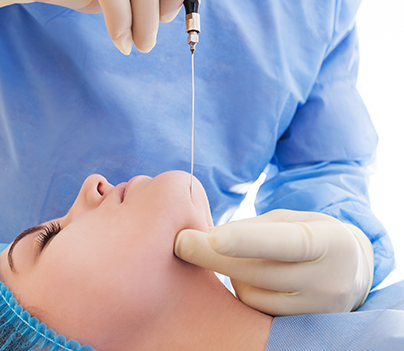
Select City
Select City
Do you have a white or yellow lump on your skin and feel bothered by it? It can be a sebaceous cyst. At Pristyn Care, we provide advanced minimally invasive sebaceous cyst treatment to safely and effectively remove the lump. Book a consultation with our expert plastic or cosmetic surgeon and determine the best approach for sebaceous cyst removal.
Do you have a white or yellow lump on your skin and feel ... Read More




Free Consultation

Free Cab Facility

No-Cost EMI

Support in Insurance Claim

1-day Hospitalization

USFDA-Approved Procedure
Choose Your City
It help us to find the best doctors near you.
Bangalore
Chennai
Coimbatore
Delhi
Hyderabad
Kolkata
Lucknow
Mumbai
Noida
Pune
Delhi
Gurgaon
Noida
Ahmedabad
Bangalore
A sebaceous cyst is a slow-growing, protein-filled lump that forms under the skin. Such a cyst originates from the sebaceous gland when it gets damaged. These glands are located on the entire body, except for the palm and soles of the feet. Thus, a sebaceous cyst can form anywhere on the body. While they are usually harmless, they can increase in size, get infected, or cause pain and discomfort. In rare cases, the cyst can also become malignant. Thus, people are advised to get the cyst removed properly.
While there are several methods available for sebaceous cyst treatment, the most effective method is surgical removal. Other methods primarily focus on improving the symptoms and providing relief, whereas surgical treatment involves removing the cyst contents along with the cyst wall.
• Disease name
Sebaceous cyst
• Surgery name
surgery, aspiration, or percutaneous sclerotherapy
• Duration
30-45 minutes
• Treated by
Plastic Surgeon or Dermatologists

Fill details to get actual cost
Diagnosing a sebaceous cyst typically involves a physical exam and evaluation by a doctor (dermatologist or plastic/cosmetic surgeon). The diagnostic process involves the following:
There are numerous options for sebaceous cyst treatment. The decision is made based on the severity of the condition, existing symptoms, and the patient’s choice of treatment. The common sebaceous cyst treatment options include the following:
Besides the medically recommended methods, there are several home remedies, ayurvedic medicine, homeopathic medicines, etc., that are also available in the market for sebaceous cyst removal. However, the effectiveness of these methods is not proven.
Surgical treatment for sebaceous cysts is recommended when the cyst is growing continuously, and there is a higher risk of cysts becoming inflamed. This can further increase the risk of cysts being ruptured and becoming infected.
Doctors usually suggest non-surgical methods first, but when they are ineffective, surgical removal is considered. The most suitable type of sebaceous cyst surgery is chosen by the doctor after diagnosing the condition.
Diet & Lifestyle Consultation
Post-Surgery Follow-Up
Free Cab Facility

24*7 Patient Support
When the cyst or cysts continue growing, cause pain, and become bothersome, the doctor will first suggest drainage of the cyst. But only drainage of the cyst content is not an effective treatment. Thus, sebaceous cyst excision is preferred over drainage.
The different methods used to remove the cyst entirely are given below:
Laser-Aided Excision- In this type of excision, a laser probe is used to make a hole in the cyst. Once the cyst is drained completely, the outer wall of the cyst is also removed after a few weeks.
There are several benefits to seeking treatment for sebaceous cysts.
To prepare the patient for the treatment procedure, the doctor will provide detailed instructions. The common instructions will include the following:
When the patient arrives at the hospital, he/she is admitted, and the nurses will run some basic tests, such as blood tests, liver function tests, etc., to ensure the patient is in optimal health. The anesthetist will discuss the allergies or previous reactions to anesthesia to determine which type of anesthesia will be suitable. After discussing everything, the patient is asked to sign a consent form before proceeding.
Before the surgery begins, local or general anesthesia will be used to numb the specific body part or entire body. Once the anesthesia takes effect, the surgeon proceeds to remove the cyst.
The entire procedure takes around 30 minutes, and the patient gets discharged on the same day.
Immediately after the surgery, the patient will be under observation for a few hours, during which his/her vitals will be monitored. Once the anesthesia wears out, the patient will be transferred to the recovery room.
The doctor will suggest that the patient rest properly on the first day. There may be some bruising or swelling around the surgical site, which will disappear within a few days.
Before discharging the patient, the doctor will create a recovery guide that consists of a diet plan as well. This will help to recover quickly and smoothly after the surgery.
The results of sebaceous cyst surgery will be clearly visible after the procedure. As the cyst grows outside the skin, after the removal, the skin will be flat again.
As the minimally invasive technique is used for removal, the recovery will also be quick. It will take around 1 week to heal after the surgery. You should pay attention to the doctor’s advice and follow the tips below to recover quickly:
During the Surgery
Regardless of the technique used for the treatment of sebaceous cysts, there are the same levels of risks and complications. These potential risks associated with surgery are:
To ensure that such complications don’t arise, the anesthetist first asks the patient for potential allergies. Besides that, the doctor uses modern surgical instruments approved by USFDA to carry out the procedure safely.
After the Surgery
Post-surgery, some complications that may arise include:
Normally, these complications can be avoided successfully if you pay attention to the doctor’s advice and take the prescribed medications.
Sebaceous cysts are primarily caused due to trauma or injury to the sebaceous glands. Therefore, the individual should always be cautious and take the necessary steps to prevent new cysts from forming. While it may not be entirely possible to prevent them, take the following measures to reduce the risk of recurrence after surgical or non-surgical treatment:
Sebaceous cysts may still develop despite preventative measures. If they do, it’ll be best to talk to a doctor and seek proper treatment.
On average, sebaceous cyst removal cost in India ranges from Rs. 35500 to Rs. 55000. This is an estimated price range, and the actual cost of sebaceous cyst removal varies for each patient due to various factors. The key factors that influence the cost are listed below:
It should also be noted that sebaceous cyst treatment can also be covered under health insurance if the condition is symptomatic. It’s advised to talk to the insurance provider to understand the terms and conditions regarding the coverage for sebaceous cyst treatment.
There are several non-surgical methods available for the treatment of sebaceous cysts. While these methods may not be suitable for all cases, they can be helpful in certain situations to manage the symptoms and get temporary relief. Here are some non-surgical methods of sebaceous cyst treatment:
While these non-surgical methods can be effective in some cases, they may not fully remove the cyst or prevent recurrence. Sebaceous cyst surgery is often considered the most definitive treatment for these cysts.
While these non-surgical methods can be effective in some cases, they may not fully remove the cyst or prevent recurrence. Sebaceous cyst surgery is often considered the most definitive treatment for these cysts.
Common home remedies may not provide a definitive cure for sebaceous cysts, but they can sometimes help alleviate symptoms or promote the healing process. Here are a few home remedies that are worth trying:
These home remedies may not work for everyone. It’ll be best to talk to a doctor before trying them to ensure they don’t worsen the condition.
There is no prescribed or over-the-counter sebaceous cyst medicine available that can specifically resolve the condition. The medicines that are generally prescribed by the doctor help in managing the symptoms, such as infection and inflammation. They cannot eliminate the cyst itself.
Besides these, some people consider trying out homeopathic and ayurvedic medicines to get long-lasting relief.
Homeopathy is a form of alternative medicine that uses highly diluted substances to stimulate the body’s natural healing response. Commonly used sebaceous cyst homeopathic medicine in India includes the following:
These medications should be prescribed by a certified homeopathic doctor.
In Ayurveda, the traditional system of medicine from India, the treatment of sebaceous cysts typically focuses on balancing the doshas (energies) in the body and promoting overall well-being. Some common ayurvedic medicine for sebaceous cysts includes the following:
It’s important for people to understand that these Ayurvedic medicines should not be taken without consulting an Ayurvedic doctor.
Similar to medications, the topical creams available to treat sebaceous cysts don’t remove the cyst itself but only address the symptoms. Certain medicines that are prescribed by doctors are salicylic acid with benzoyl peroxide and 1% hydrocortisone cream. The benzoyl peroxide kills the bacteria in and around the cyst, while the salicylic acids target the dead cells and reduce the production of sebum. The hydrocortisone cream helps to reduce the inflammation in the cyst.
Using creams or ointments without proper medical guidance may not be effective in treating sebaceous cysts and may even cause further complications. Therefore, it’s always best to seek help from a professional before trying out these non-surgical methods of sebaceous cyst treatment.
You should see a skin specialist the moment you notice the lump on the skin. It is important to get the lump diagnosed in the early stage to prevent it from growing further.
No, there are no medications available that can treat sebaceous cysts. Medicines are only prescribed by the doctor to address the infection and inflammation in the cyst.
Generally, sebaceous cyst removal is performed under general anesthesia. But if the patient is allergic to some components of the general anesthesia, local anesthesia may be used to numb the body during the surgery.
Usually, a person can resume work the next day after sebaceous cyst surgery. The wound will take longer to heal, but it is less likely to interfere with your daily activities.
The chances of sebaceous cysts returning after surgical removal are almost negligible. The cyst is removed entirely along with the cyst wall. Thus, it is less likely to return. However, surgical treatment cannot prevent the cyst from forming into a different part of the body.
To get a sebaceous cyst removed, it’ll be best to see a plastic/cosmetic surgeon or a dermatologist. They are skilled in treating all skin-related problems effectively through various techniques.
If a sebaceous cyst is not symptomatic or causing any cosmetic problems, they are often left as they are. However, if the cyst is problematic, it’ll be better to get it removed by a certified and experienced doctor.
Many people try to remove or pop sebaceous cysts at home, but it’s never advised. At home, the environment is not sterile, and a regular person doesn’t have the necessary skills to remove the cyst safely and entirely. If you try to remove the cyst at home, you may get temporary relief, but the cyst will recur and may even get infected, which will necessitate surgical removal.
Yes, sebaceous cysts may resolve on their own naturally without any intervention. But they also tend to come back very often. Therefore, it’s always advised to seek help from an expert to get proper treatment for these cysts.
Applying warm compresses to the cyst can help soften the contents and promote drainage. When done frequently, warm compresses help to relieve the discomfort and as the contents are drained, the cyst can start to heal.
You should see a skin specialist the moment you notice the lump on the skin. It is important to get the lump diagnosed in the early stage to prevent it from growing further.

Lancing
This technique involves using a sharp knife to create a hole in the cyst. Then it is squeezed, and the contents of the cyst are drained. However, the cyst wall is not removed in the procedure, which is why it is not considered a permanent solution.

Conventional Wide Excision
It is the traditional method to remove sebaceous cysts through a wide excision. This technique is highly invasive but also has minimal chances of cyst recurrence.

Minimal Excision
As the name suggests, the minimal excision technique involves using tiny incisions in the skin overlying the cyst. This minimizes the scarring and removes the cyst entirely.

Punch Excision
With punch excision, the doctor removes the cyst and the normal skin around it altogether using a scalpel that looks like a cookie-cutter.

Laser-Aided Excision
In this type of excision, a laser probe is used to make a hole in the cyst. Once the cyst is drained completely, the outer wall of the cyst is also removed after a few weeks.
Sandhya M
Recommends
Dr. Kritika Jagadish explained clearly the issue and made us comfortable for surgery. Surgery was successful and post surgery healing went very well. Post surgery medication and guidance consulting , we are very much happy and satisfied. We'll recommend Dr .Kritika Jagadish
Kajal Kumari
Recommends
Doctor is very professional and friendly.he explain the things very well and makes patient comfortable. it was good experience.
Syed Masiuddin Ahmed
Recommends
I would like to thanks for the services. Further, the coordinator saurab and sameer were too helpful and always responding me for my concerns.
Varun
Recommends
Wonderful experience... I had recently gone through Sebaceous Cyst Surgery....Dr. Ashish Sangvikar is a wonderful surgeon..Dr. make patients feel comfortable and relaxed, understand their concerns, and explain complex medical concepts in a way that's easy to understand and the staff is also helpful and kind. I am so glad I chose Dr. Ashish Sangvikar and would highly recommend to anyone...
.svg)